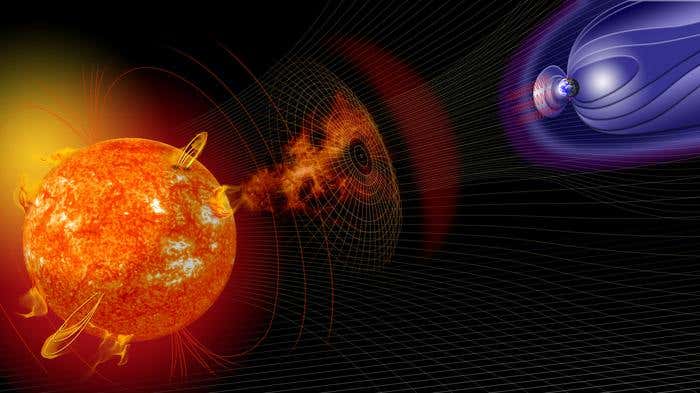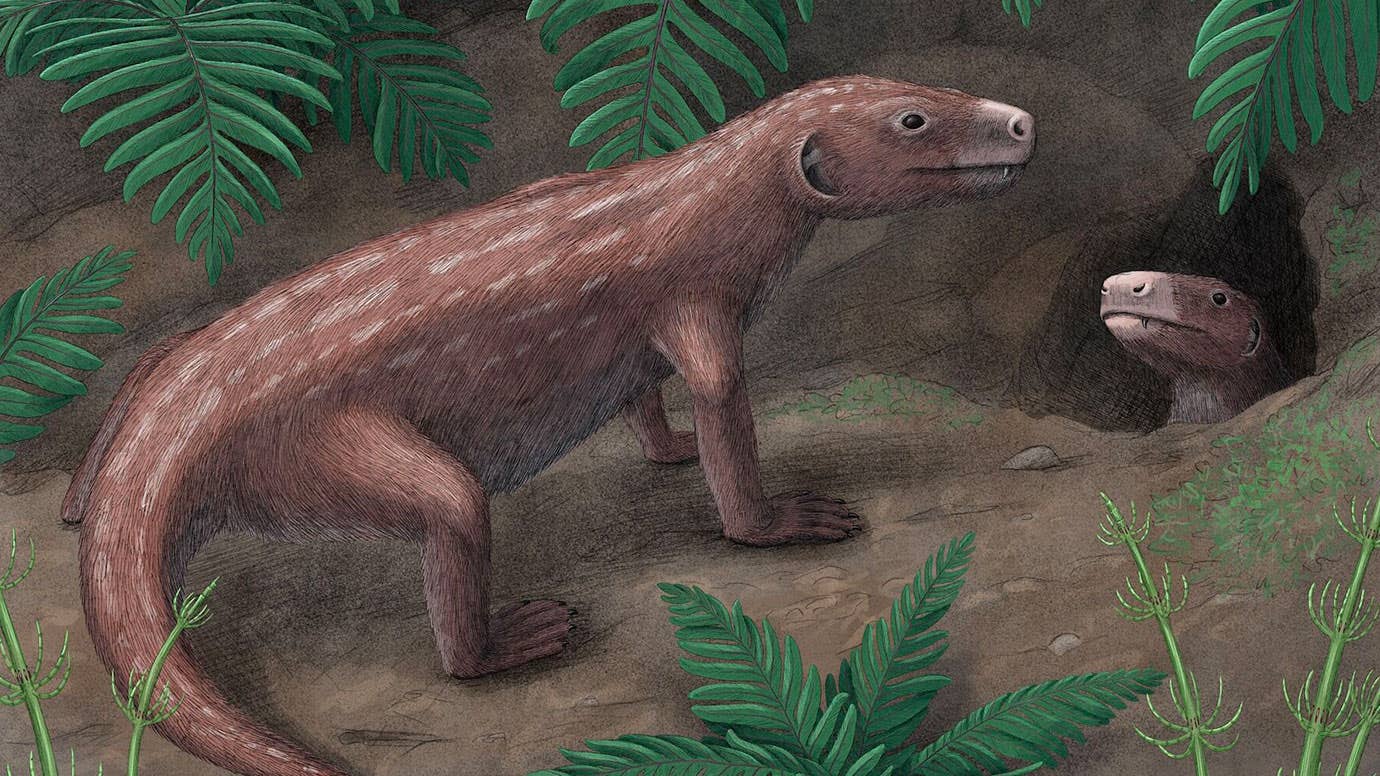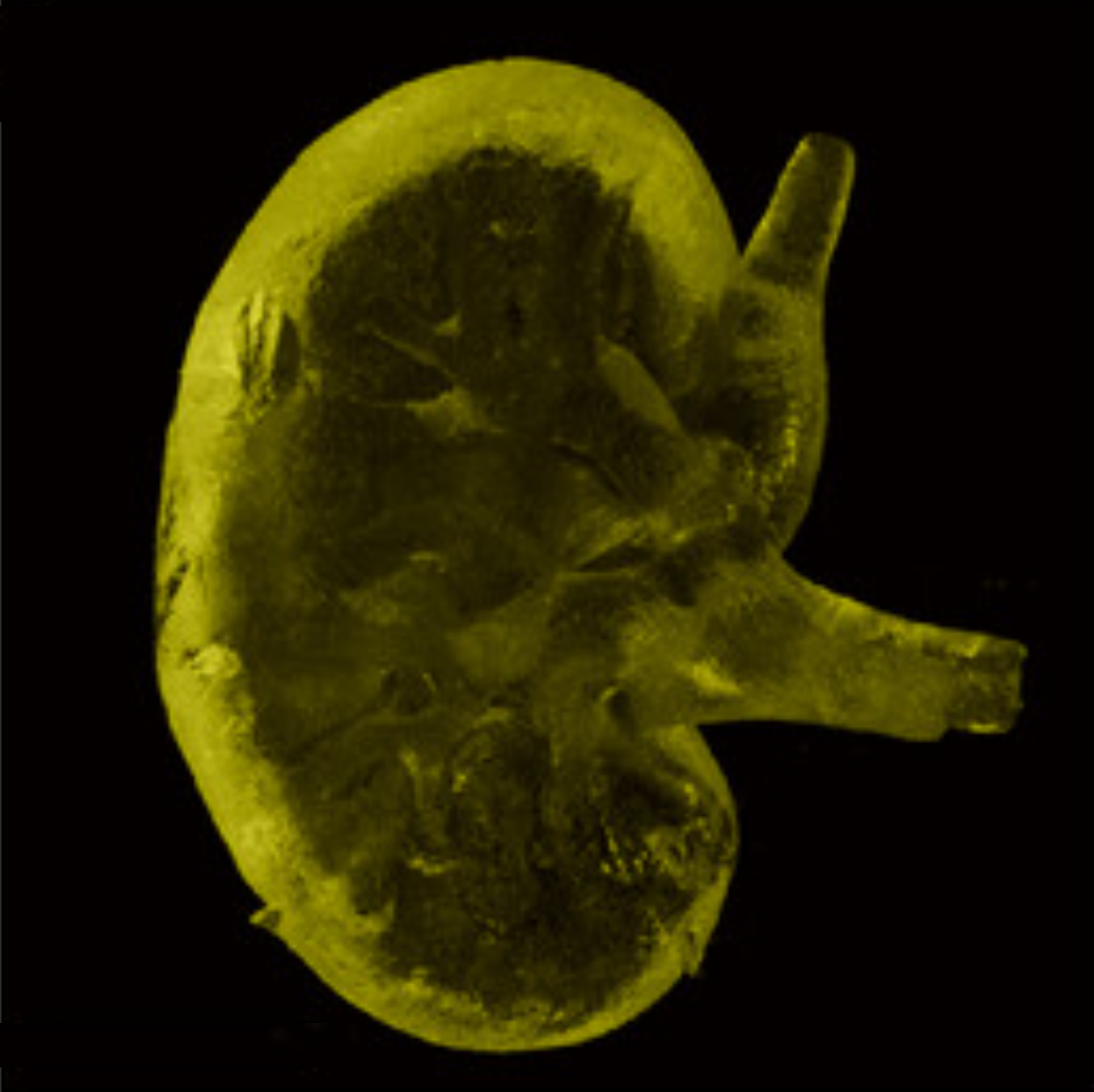Massive 14,300-year-old solar storm discovered in tree rings
A collaborative international team of scientists has revealed a massive spike in radiocarbon levels dating back 14,300 years ago.

[Oct. 29, 2023: Staff Writer, The Brighter Side of News]
Artist illustration of events on the sun changing the conditions in Near-Earth space. (CREDIT: NASA)
In a groundbreaking discovery, a collaborative international team of scientists has revealed a massive spike in radiocarbon levels dating back 14,300 years ago. This evidence was found in ancient tree rings from the French Alps, suggesting a colossal solar storm, the most substantial ever identified.
Such an event occurring today would pose a significant threat to our technologically advanced society, highlighting the importance of understanding and preparing for such solar phenomena.
The study, made public on October 9, has been featured in The Royal Society’s Philosophical Transactions A: Mathematical, Physical, and Engineering Sciences. It offers fresh insights into the Sun's volatile behavior and the potential risks it poses to Earth.
Subfossil trees in the Drouzet river. (CREDIT: Cécile Miramont)
Research teams from institutions like the Collège de France, CEREGE, IMBE, Aix-Marseille University, and the University of Leeds focused their efforts on trees found along the eroded banks of the Drouzet River near Gap in the Southern French Alps. These trees, known as subfossils, haven't fully fossilized. On analyzing individual tree rings, the researchers pinpointed an unprecedented spike in radiocarbon levels occurring 14,300 years ago. They deduced that this spike might have resulted from a massive solar storm, with this assumption being supported by beryllium measurements from Greenland ice cores.
The Science Behind the Findings
Edouard Bard, Professor of Climate and Ocean Evolution at the Collège de France and CEREGE, and the study's lead author explained, “Radiocarbon is continuously produced in the upper atmosphere, initiated by cosmic rays. It's been established that extreme solar events, like solar flares and coronal mass ejections, can cause short-term energetic particle bursts. These are evident as considerable spikes in radiocarbon production over just a year.”
Related Stories:
The Stakes for Modern Society
Today, with our reliance on advanced technology, an equivalent solar storm could be disastrous. Potential repercussions include disruptions to telecommunications, the destruction of satellite systems, crippling power grid blackouts, and financial losses running into billions. Professor Tim Heaton from the University of Leeds emphasized, “Such super storms could damage our electricity grids' transformers, leading to extensive blackouts for months. Satellites critical for navigation and telecommunication might suffer permanent damage. There's also a severe radiation risk for astronauts.”
Over the past 15,000 years, nine extreme solar events, termed Miyake Events, have been recognized. The two most recent ones occurred in 993 AD and 774 AD. Still, the 14,300-year-old event surpasses them in magnitude, being roughly double in size. Despite their significance, Miyake Events remain enigmatic, having never been directly observed.
Tree rings of a buried subfossil tree in the Drouzet river. (CREDIT: Cécile Miramont)
Professor Bard stated, "While we've had instrumental measurements of solar activity since the 17th century, these records aren't sufficient for a full understanding of the Sun. Radiocarbon in tree rings, along with beryllium in polar ice cores, can better inform our understanding of the Sun's past behavior.”
Historical Context
To put the discovery in context, the most prominent observed solar storm, the Carrington Event, took place in 1859. It wreaked havoc, destroying telegraph machines and leading to a night-time aurora so bright that it fooled birds into thinking it was dawn. The magnitude of the Miyake Events, including the newly identified one, dwarfs the Carrington Event.
Subfossil trees in the banks of the Drouzet river. (CREDIT: Cécile Miramont)
Professor Heaton added, “Radiocarbon offers an incredible means to delve into Earth’s history. To predict and prepare for future challenges, understanding our past is crucial. We're always learning, and each discovery poses more questions.”
Highlighting the significance of their find, Associate Professor Cécile Miramont from IMBE, Aix-en-Provence University, mentioned, “Finding such a collection of preserved trees was exceptional. Using dendrochronology, we reconstructed longer timelines from individual tree rings. This provided a goldmine of information about past environmental shifts and an uncharted period of solar activity.”
This revelation underscores the critical need to invest in understanding solar events better, especially considering our heavy dependence on technology. The Sun, while the source of life, can also pose unpredictable challenges. Preparing for these challenges might be the difference between technological advancement and regression.
Note: Materials provided above by The Brighter Side of News. Content may be edited for style and length.
Like these kind of feel good stories? Get the Brighter Side of News' newsletter.



